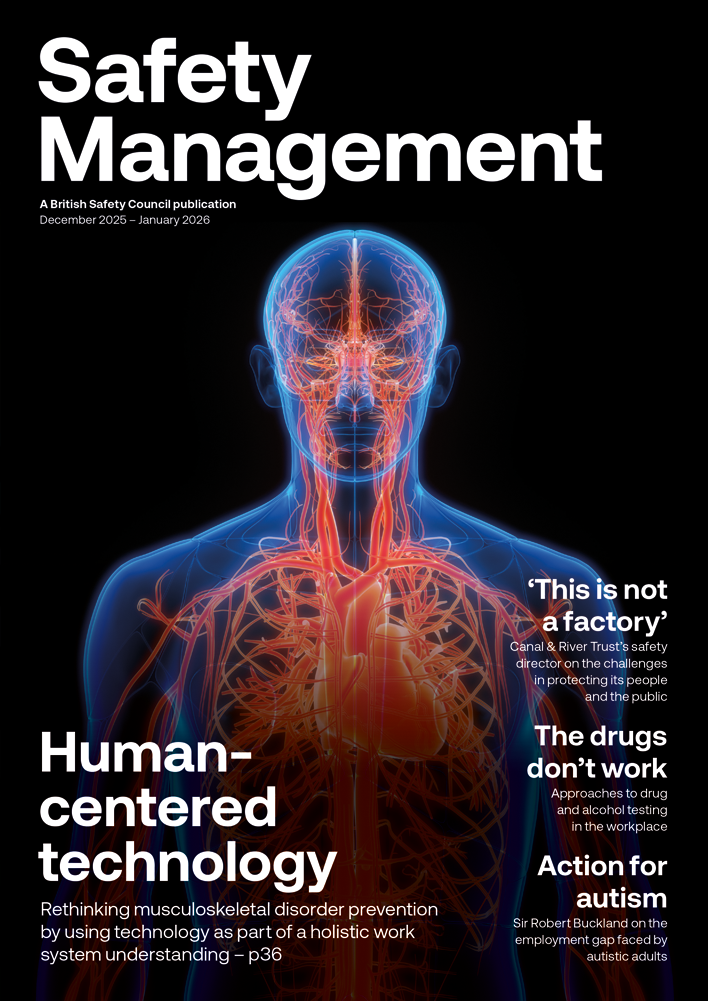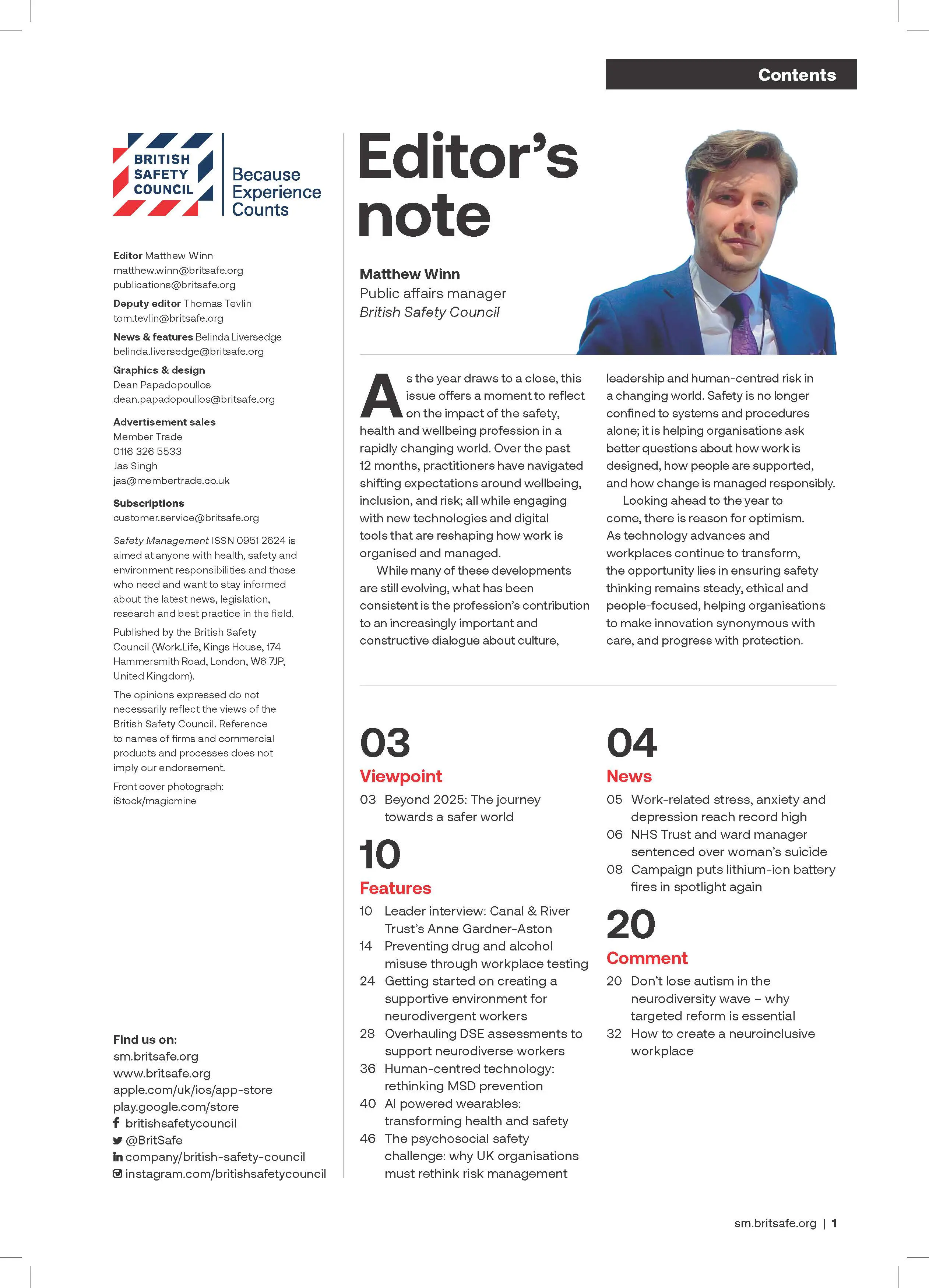For many businesses, the Christmas and New Year period sees increased use of equipment like forklifts as customer demand, sales and goods handling surge, so it’s essential that measures like adequate segregation of people and machines are in place to keep everyone safe.
Features
Keeping people safe around material handling equipment at peak times
During busy periods, such as seasonal peaks, many businesses will experience a surge in customers, deliveries and overall personnel, sometimes taking on temporary or agency workers to meet demand.
For those that have material handling equipment (MHE) on site, intensified activity levels in the vicinity of these moving vehicles makes it crucial to ensure relevant measures are taken to reduce any increased risk.
At times like these, as ever, it’s vital to ensure that everyone who sets foot on site understands the dangers and remains safe. Crucially, that includes keeping pedestrians and MHE a safe distance apart, wherever possible.
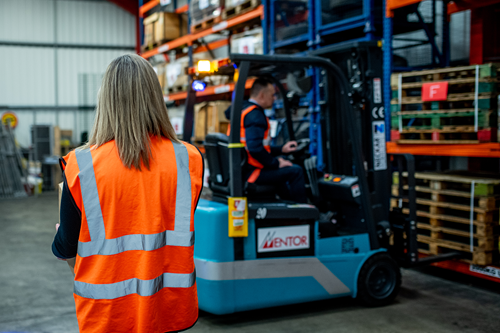 It’s essential that, wherever possible, pedestrians are kept out of forklift operating areas. Photograph: Mentor Training
It’s essential that, wherever possible, pedestrians are kept out of forklift operating areas. Photograph: Mentor Training
Why segregation matters
In a recent case, one UK company was fined £400,000 (plus costs) after a worker was seriously injured by a forklift truck whilst walking onsite.
The latest provisional RIDDOR figures indicate that being struck by a moving vehicle led to over 1,300 non-fatal injuries to employees in Great Britain in the last reported year alone. (It is currently estimated that around half of all such injuries are reported, so actual figures may be greater).
Over the past five years, this kind of accident has accounted for around 19 per cent of all work-related fatalities reported under RIDDOR, according to provisional figures. This makes it the second largest kind within that period, behind falls from height at just over 23 per cent (although figures must be interpreted with care).
As with any vehicles, pedestrians and lift trucks in the same environment means heightened risk, especially as operations ramp up, so it’s vital that appropriate safety measures are in place and those in the vicinity have the relevant knowledge and awareness to stay out of harm’s way.
Peak periods may introduce additional factors such as agency/temporary workers into the mix, only due to be with the business for a short time, who will be unfamiliar with the site and working practices. Public-facing companies can also see increased volumes of customers on site who, unlike staff, may have no awareness of MHE safety at all, as this is simply something they do not encounter day to day.
Segregation is key to keep everyone safe, and failing to do so can have consequences, not only serious accidents, but prosecutions and fines. The final outcome is dependent on many different factors, but failure to comply isn’t a risk worth taking.
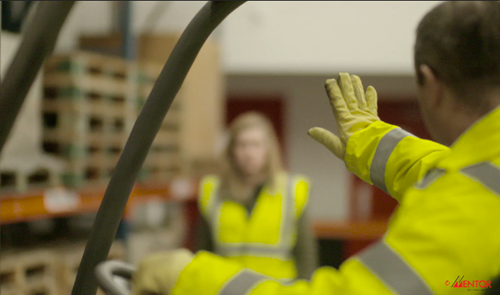 Ensure staff are sufficiently trained and all those present onsite understand the importance of segregation. Photograph: Mentor Training
Ensure staff are sufficiently trained and all those present onsite understand the importance of segregation. Photograph: Mentor Training
Effective segregation methods
So, with pedestrian segregation identified as a vital safety measure, how do you ensure it is effectively implemented on your site?
It’s essential that, wherever possible, pedestrians are kept out of forklift operating areas, for the safety of all parties. Using separate working zones, accompanied by physical barriers, clearly marked pedestrian routes/crossings and relevant signage as reminders, is the best way to do this, where viable.
Clearly designate any operator-only areas and ensure pedestrians are aware of them and know not to enter. Establish and communicate who has right of way within these zones. If pedestrian access is necessary, provide clearly marked walkways to allow safe passage.
Identify routes around site including potential crossing points and consider all areas where pedestrians and forklifts may interact, including access points, the sides and ends of aisles, areas with reduced visibility, and battery charging stations. These are high-risk areas where caution is essential.
Avoid crossing paths where possible and wherever forklifts and pedestrians will be operating in close proximity, implement effective segregation measures at all times to maintain a safe distance between them.
Supplementing physical segregation measures
Where physical segregation is not feasible, or to supplement it, the Health and Safety Executive’s Approved Code of Practice (ACOP) for Rider-operated lift trucks (known as L117), suggests other measures to ensure segregation, such as:
- Audible warning devices (for example, reversing alarms)
- Flashing warning beacons
- Visibility aids, such as CCTV cameras or convex mirrors
- High-visibility clothing for pedestrians
- Presence-sensing equipment that alerts operators to pedestrians or obstacles.
By combining these methods, duty holders can create a safer environment that helps to highlight the risks and is easy to safely navigate. This helps to ensure the safety of both employees and customers alike.
Communicating safe practice
With the right measures in place, it’s then vital to ensure that anyone who steps on to the site understands how to navigate it safely.
Remember, customers are unlikely to possess the same safety awareness as trained operators. For this reason, safety measures must be unambiguous, clearly indicating restricted zones and preventing any interaction with moving equipment. Proper segregation should eliminate any room for confusion and be the key to maintaining a safe environment.
Keep in mind that customers will have had no induction before setting foot on your site, nor will they have undergone any form of training, so it should not be assumed that they will have any prior knowledge of the risks. It is also unlikely that they will be wearing any form of PPE, such as hi-vis vests, that employees may wear for visibility.
There are also any new starters to consider. Though they may join the business with some prior experience of working near or operating MHE, new members of the team or agency workers employed at peak times will also need to be made aware of the employer’s site safety requirements. Don’t forget, employers have the same responsibility to provide adequate training regardless of how long someone will be part of the team, so whether someone is with the business for 10 weeks or 10 years, all requirements must still be met.
Carry out the relevant onboarding process so you can be sure new starters are trained to the required standard and safe to begin working alongside others on site. If they have prior experience in working near or operating MHE – such as forklifts or operator ‘ride-on’ pallet trucks – you can check their existing credentials (certification) to confirm the standard of any training previously completed. For assurance of required standards, check certificates for courses accredited by Accrediting Bodies Association (ABA) member bodies. If non-accredited training has been completed, you can contact the company that provided the training for any further information you require.
Even if a new starter does have prior training in operating MHE, confirm their operational skills in a controlled environment to ensure their current standards.
Once you have confirmed their operational skills by checking their certification and carrying out a practical assessment, forklift operators may require additional basic training, Depending on their experience level, this could be novice training, refresher training or conversion training (if they are not trained on the truck type used on your site).
Further to basic training provision, all forklift operators also require specific job and familiarisation training, as per ACOP L117. This is often overlooked, but vital to ensure that new starters understand any site-specific risks and are comfortable using your trucks in your working environment – something that will help them hit the ground running during peak times.
Seasonal considerations
As the time of year changes, so can the day-to-day environment encountered by your team. For instance, during the winter period they may be required to work in darker conditions due to the reduced number of daylight hours, affecting visibility.
If they are working outside, they may be faced with wet and cold conditions that add further complications to their daily tasks, such as icy ground or dealing with wet or slippery loads that need securing.
These kinds of scenarios must be considered by those overseeing operations within your place of work. The safety of all on-site should remain the number one priority, so the best course of action is to pre-plan and have effective safe systems of work in place designed to reduce risk.
Preparation is key to safety
For many businesses, busier seasonal periods are a positive prospect. They come with the potential of added footfall and increased profits. This shouldn’t be any different for your organisation. If you successfully plan in advance, ensure staff are sufficiently trained and all those present onsite understand the importance of segregation and safe practices, there will be no need to worry over the holidays or any peak periods.
For more information see:
mentortraining.co.uk
[email protected]
T. 01246 555222
Andy Cartwright is Technical manager at Mentor FLT Training
FEATURES
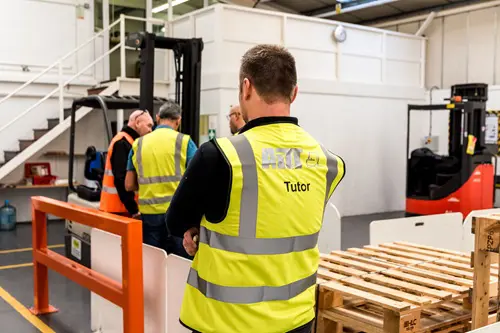
Why workplace transport training is changing in 2026 and what it means for employers
By AITT on 26 November 2025
New workplace transport training categories due in January mean it is essential to ensure operators of material handling equipment have the necessary training for the exact type of machine they use, and accredited training providers are an ideal source of advice and conversion training.

Educating drivers – why greater road awareness and education is at the heart of future change
By Leo Taylor, Drivetech, from The AA on 17 November 2025
Drivers are sometimes offered the option of taking a road safety course as an alternative to enforcement sanctions like penalty points on their licence, and the evidence suggests this training has a positive impact on driver behaviour, including for those who drive for work purposes.
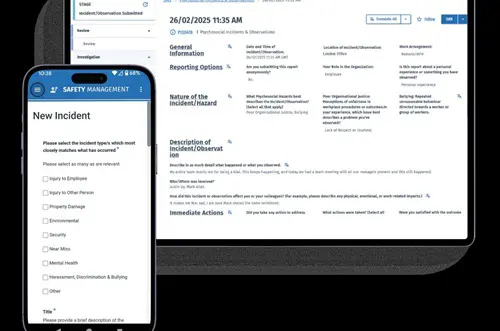
The psychosocial safety challenge: why UK organisations must rethink risk management
By Jose Arcilla, HSI on 09 December 2025
Employers are increasingly keen to effectively manage psychosocial risks such as stress, bullying and poor work-life balance, and EHSQ digital tools make it easier both for workers to report psychosocial problems and for managers to spot patterns and trends, intervening early to protect everyone’s mental and physical wellbeing.


